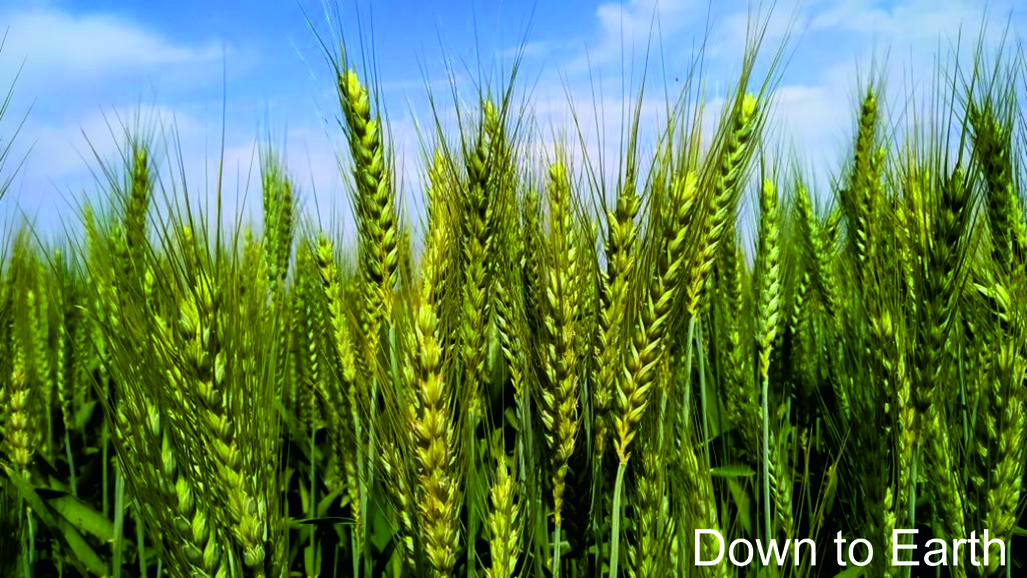Scientists discover new drought-resilient wheat gene (GS Paper 3, Science and Tech)

Why in news?
- Recently, scientists at the John Innes Centre, in collaboration with an international team of researchers, discovered the new ‘reduced height’ or semi-dwarf gene called Rht13.
Rht13 gene:
Challenges of reduced height genes:
- Since the 1960s and the Green Revolution, reduced height genes have increased global wheat yields because the short-stemmed wheat they produce puts more investment into the grains rather than into the stems and has improved standing ability.
- However, these genes bred into wheat also have a significant disadvantage of not working in drought-like conditions.
- When these varieties are planted deeper to access moisture in water-limited environments, they can fail to reach the surface of the soil.
New gene:
- The newly discovered gene overcomes this problem of seedling emergence because the gene acts in tissues higher-up in the wheat stem.
- So, the dwarfing mechanism only takes effects once the seedling has fully emerged. This gives farmers a significant advantage when planting deeper in dry conditions.
- Experiments testing the effects of the gene in a range of transgenic wheat plants confirmed that the Rht13 variation represents a new class of reduced height gene, more commonly associated with disease resistance as opposed to widely used Green Revolution genes (Rht-B1b and Rht-D1b) which are associated with hormones and therefore affect overall growth.
- Additionally, the study found that the new semi-dwarfing gene may be able to withstand stormier weather too.
What’s next?
- The next step for this research will be to test how this gene works in diverse agronomic environments from the UK to Australia.
Bharat Biotech's intranasal vaccine gets approval as heterologous booster
(GS Paper 2, Health)
Why in news?
- Bharat Biotech recently announced that iNCOVACC, has received approval from the Central Drugs Standard Control Organisation (CDSCO) under Restricted Use in Emergency Situation for ages 18 and above, in India, for heterologous booster doses.

What is INCOVACC?
- iNCOVACC is a recombinant replication deficient adenovirus vectored vaccine with a pre-fusion stabilised SARS-CoV-2 spike protein.
- Candidate who was given this vaccine was evaluated in phases I, II and III clinical trials with successful results.
- iNCOVACC has been specifically formulated to allow intranasal delivery through nasal drops. The nasal delivery system has been designed and developed to be cost-effective in low- and middle-income countries.
- It is stable at 2-8°C for easy storage and distribution and has the double benefit of enabling faster development of variant-specific vaccines and easy nasal delivery that enables mass immunisation.
Collaboration:
- The vaccine was developed in partnership with Washington University, St. Louis, which had designed and developed the recombinant adenoviral vectored construct and evaluated in preclinical studies for efficacy.
About Bharat Biotech:
- Bharat Biotech International Limited (BBIL) has established an excellent track record of innovation with more than 145 global patents, a wide product portfolio of more than 19 vaccines, four bio-therapeutics, registrations in more than 125 countries, and the World Health Organization (WHO) Prequalification.
- It has established large manufacturing capabilities at multiple sites across India, including Gujarat, Karnataka, Maharashtra and Telangana, with operations across pan India.



